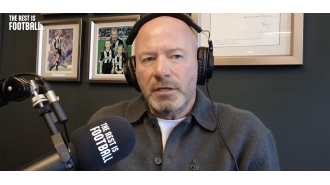A Model For A Competitive Broadband Market
In the White House’s Broadband Report, released yesterday, it states:
At the same time, limited competition is also a challenge even in communities with high rates of adoption. Today, nearly 40 percent of American households either do not have the option of purchasing a wired 10 Mbps connection or they must buy it from a single provider. Three out of four Americans do not have a choice of providers for broadband at 25 Mbps, the speed increasingly recognized as a baseline for broadband access. Lowering barriers to deployment and fostering market competition can drive down price, increase speeds, and improve service and adoption rates across all markets.
That last bit, about competition driving down prices and increasing the quality of broadband services, is exactly right. But how do we get a competitive broadband market?
I believe the telecommunications market needs to move away from vertical integration where one provider builds, manages, and delivers the entire telecommunications stack to the market. We need to move to a layered model much like the software industry has adopted and which results in a highly competitive market at each layer. We tried this in the 1990s with the Telecommunications Act of 1996 which provided that incumbent carriers were required to offer new entrants access to their networks. For many reasons, that didn’t work out and tens of billions (maybe hundreds) were incinerated when the CLECs (the new entrants) were stymied by the incumbent carriers and failed to build sustainable businesses. That massive failure has weighed over the broadband market for the past 15 years as most investors moved onto more fertile areas of investing in the TMT (telecom, media, technology) sector.
But just because it didn’t work doesn’t mean it was not the right model. The owners of the plumbing (copper, fiber, spectrum) must be required and incentivized to open their networks to competition. When this happens, we see entrepreneurs emerge to offer new innovative services and investment dollars follow them. When this does not happen, we see wasting assets and stagnating performance and quality.
How do we get there? Through a combination of smart and lightweight regulation (oh the horror of that word!) and by focusing on and supporting innovative entrepreneurs who are working in the telecommunications market. We are doing both at USV. We have been steady, vocal, and critical supporters of regulatory efforts, championing them when they are light and smart and opposing them when they are heavy and dumb. We are also making investments in new innovative telecommunications services. We have announced at least one of them and have at least one that we have yet to announce. My partner Brad is leading our effort in this area both on the policy side and the investment side.
I believe in competition more than any other market or governmental force to bring good things to the market. We need more of it, not less of it, in the broadband market. If we want to expand broadband access to every home, business, and person in this country, competition is the way to do it.






